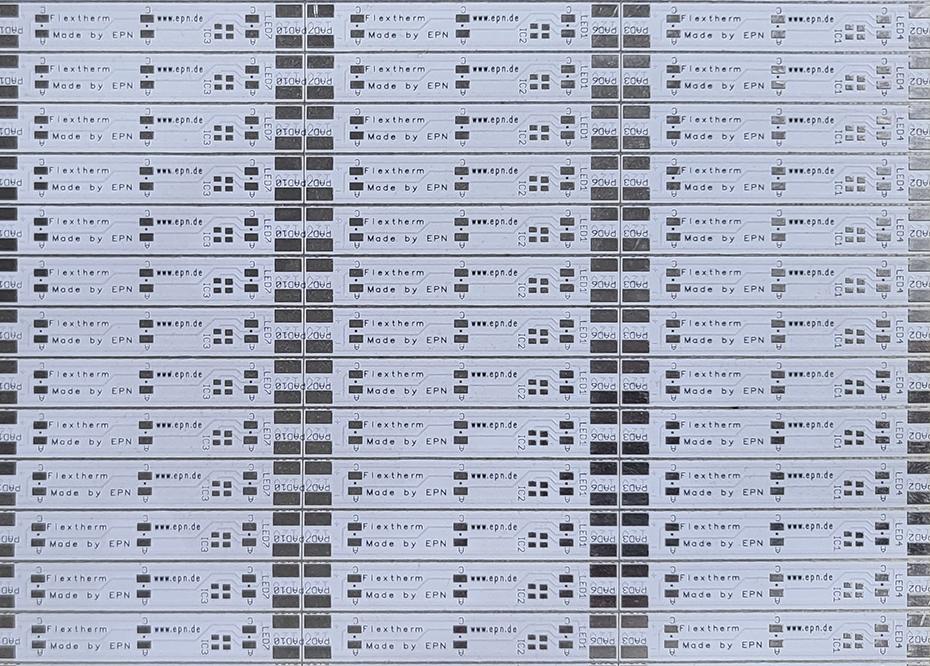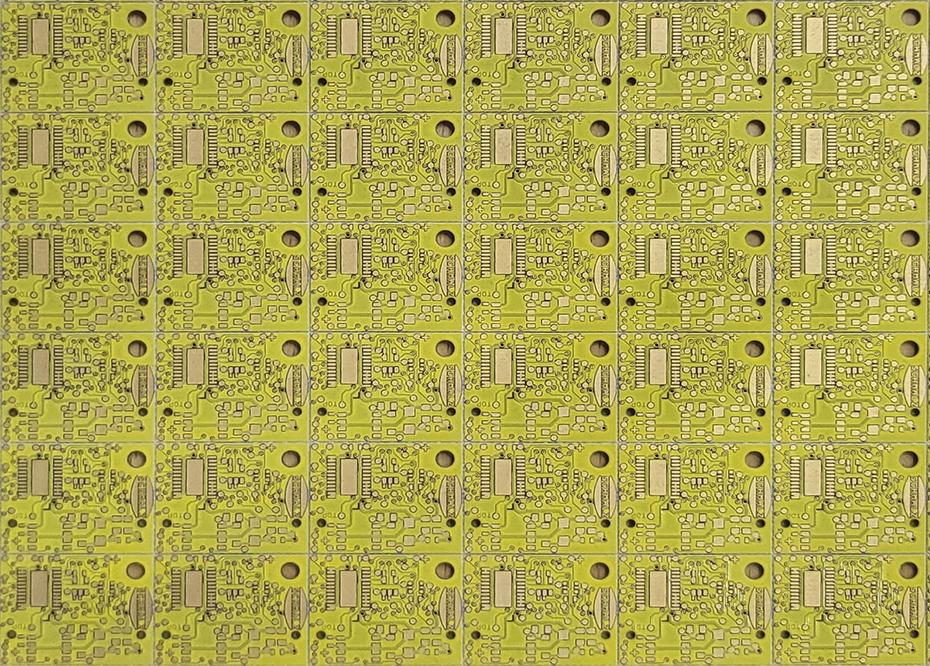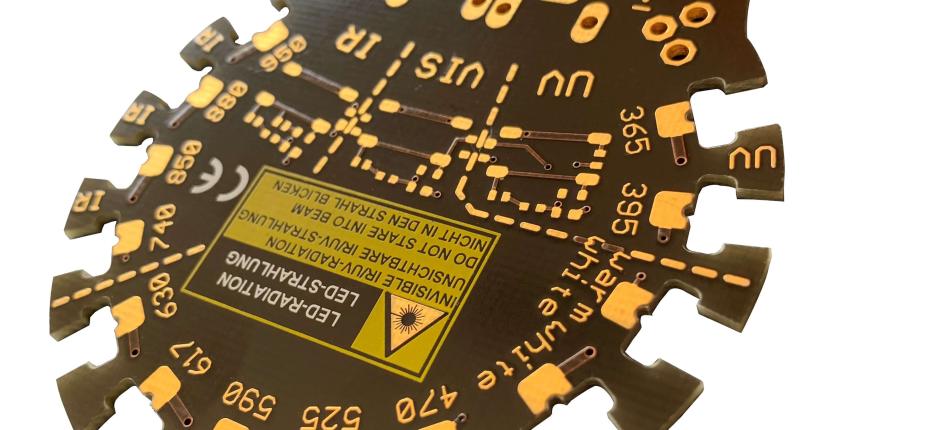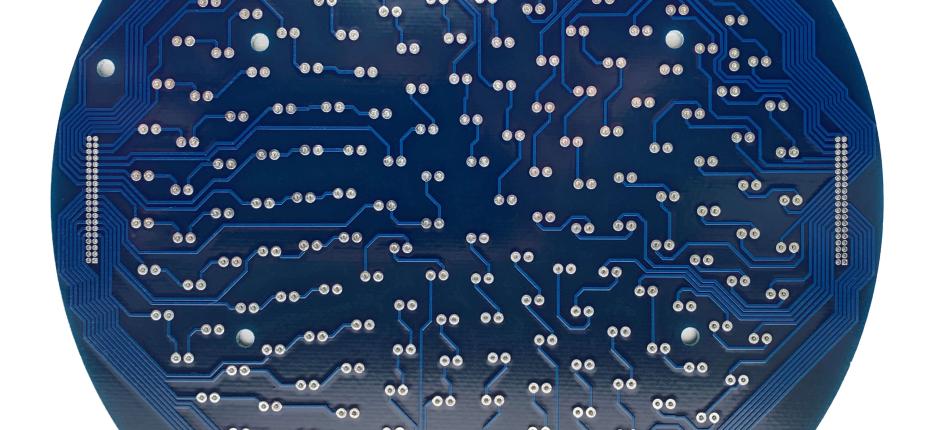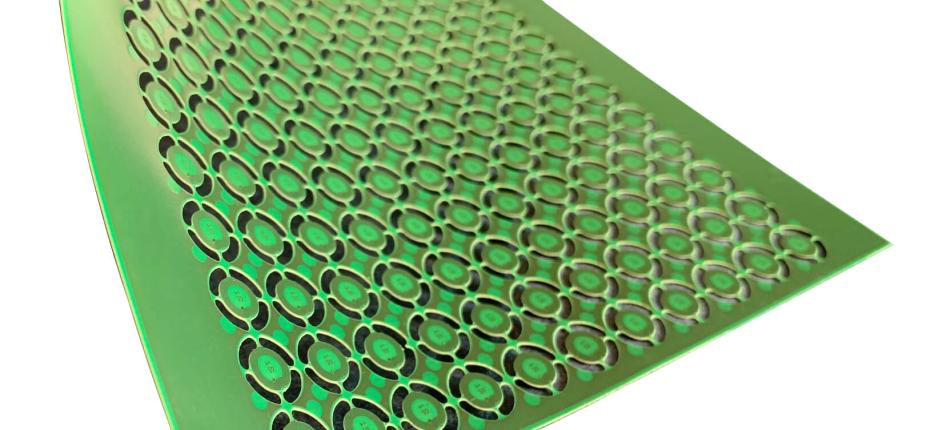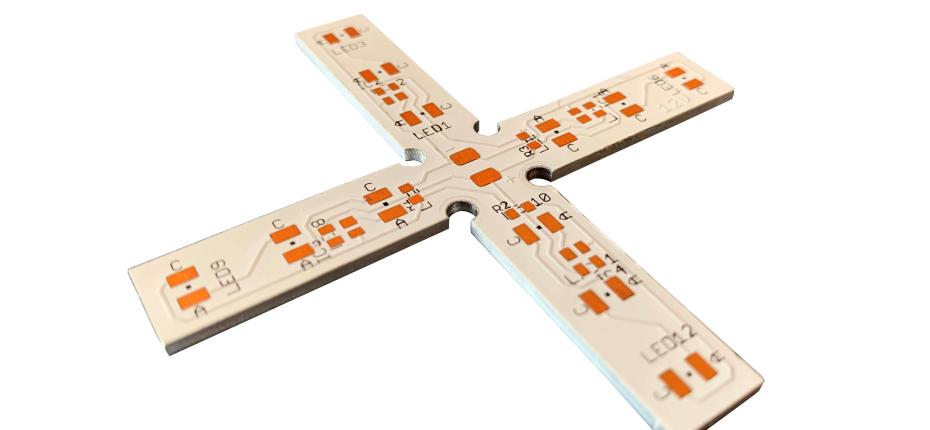Solder Mask, Peelable and EMI Shielding
Surface insulation and protection of PCBs: the solder mask

A solder is a polymeric material, similar to paint.
It is deposited via curtain deposition, by screen printing or via spraying, on the external sides of the printed circuit board to protect and insulate the copper vias, from one another and vis-à-vis the external environment, prior to the application of the surface finish.
Exposing the solder to heat creates a genuine protective mask, hence the wording solder mask.
The green solder is the most common because, by way of contrast, it allows more effective defect detection during a visual check.
In general, however, the solder colour does not have a specific function except for some exceptions.
A white solder is widely used in lighting to enhance light reflection, for home LED lighting rather than in the automotive and avionics industries.
A black solder absorbs light and for this reason it is used in devices such as cameras, barcode readers and other vision devices where light is undesirable.
A blue solder is the one most commonly used for LCD screens.
Portions of the PCB can be covered after application of the surface finish, with peelable solder – the term stems from the fact that it can be peeled off – used to protect the vias or pads from soldering processes.
In EPN, we use all the solder colours available on the market, in glossy and matt finish: green, blue, white, black, yellow and red.
Contact us for more information
CASE
